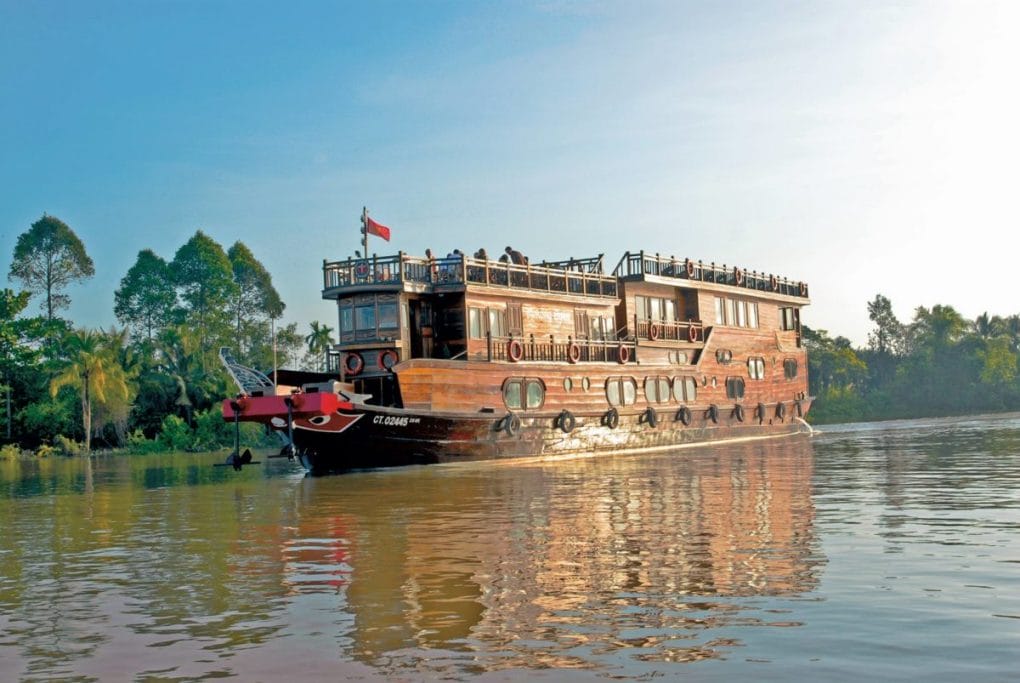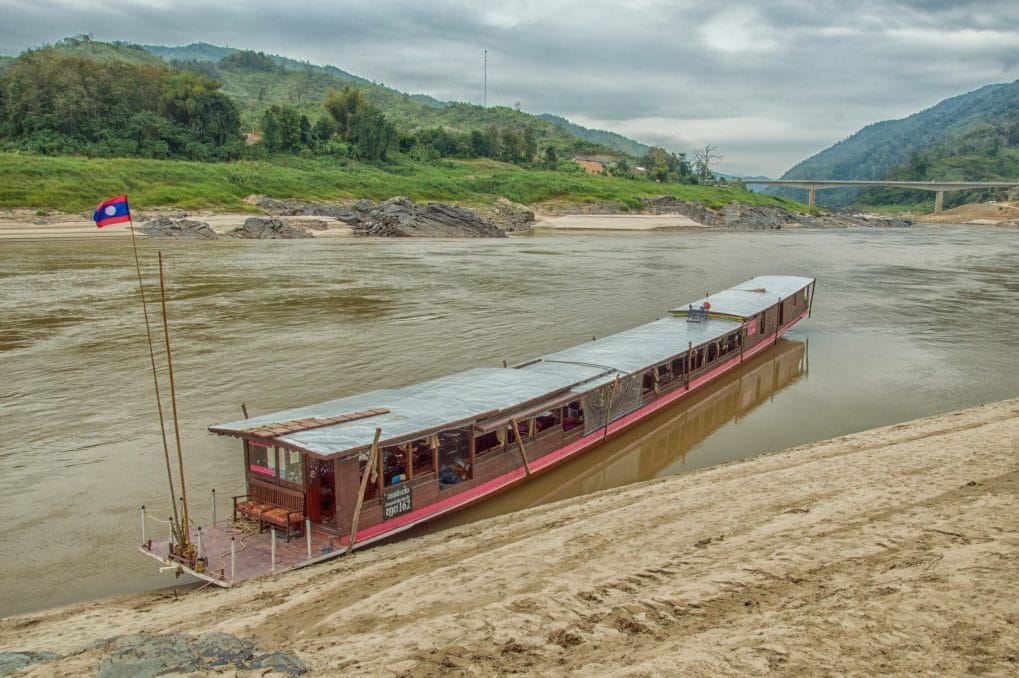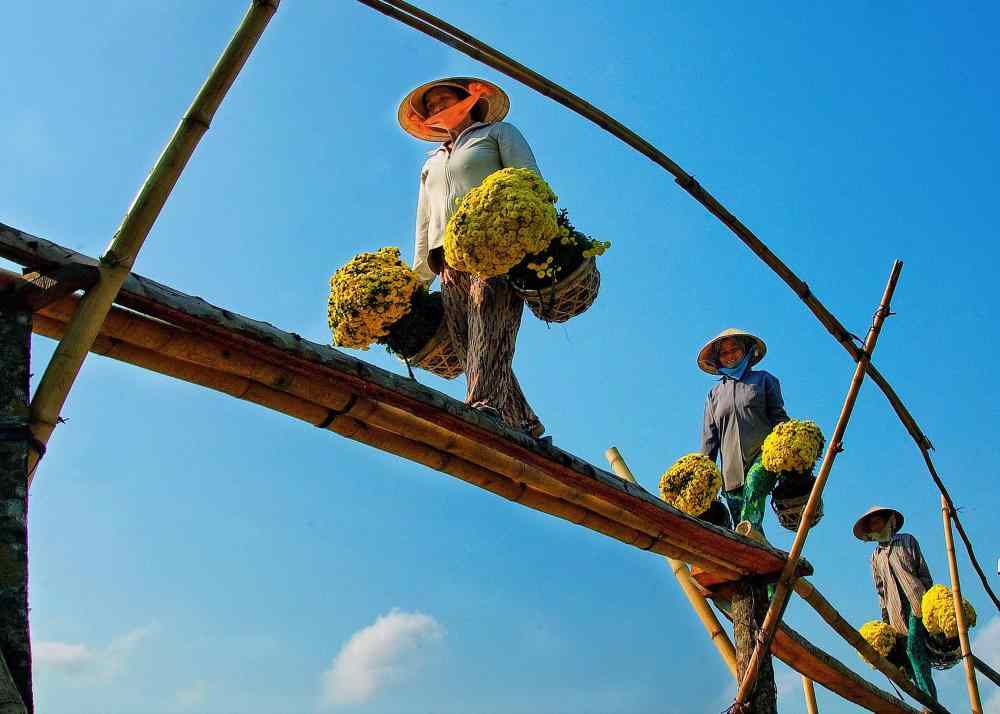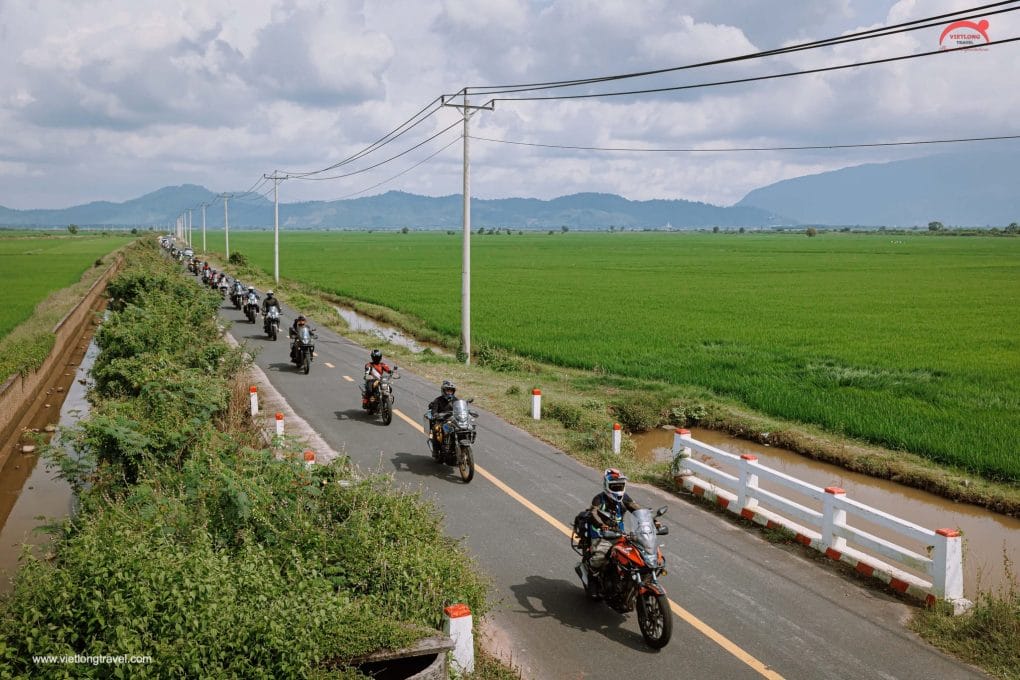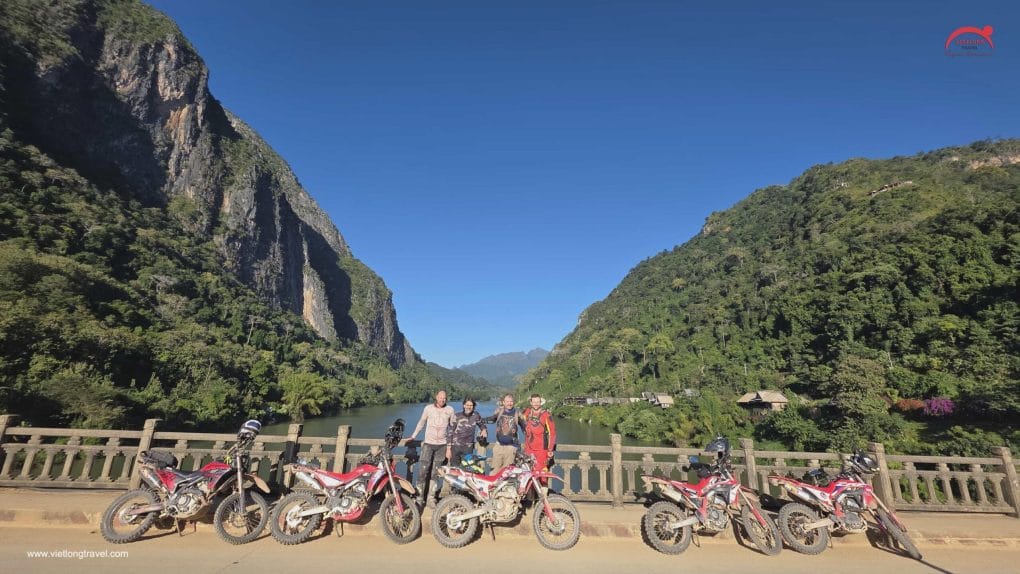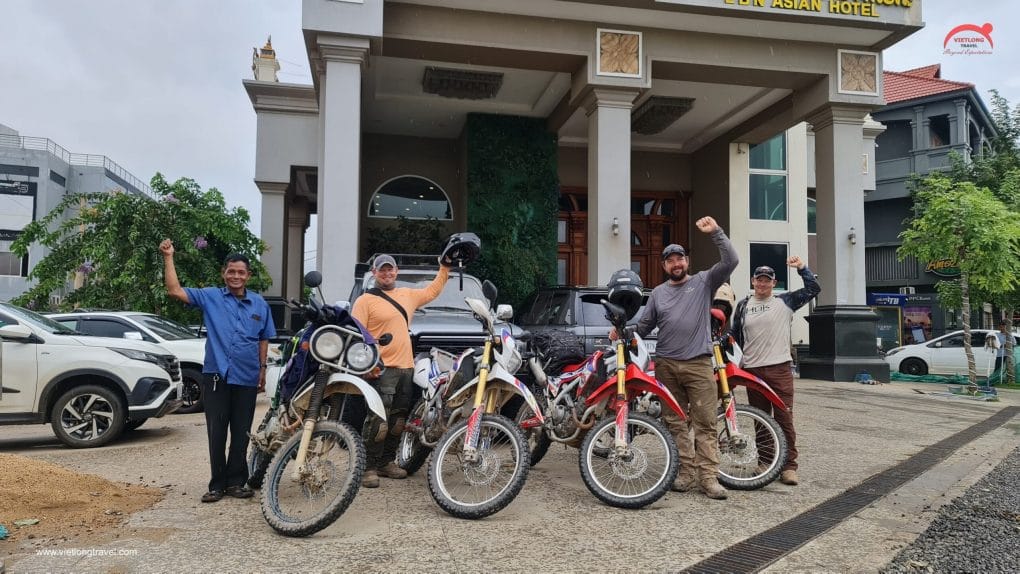CAMBODIA LITERATURE
From the earliest times in Cambodia, epic poems and folk tales were transmitted orally; spontaneous literature of this type may still be found today amongst certain ethnic minority communities of the north and north east of the country.
The earliest written works took the form of Sanskrit verses inscribed on palm leaf manuscripts during the Angkorian era (9th-13th centuries). By the 11th century Buddhist treatises and jataka were being produced on a regular basis.
The oldest work written in Khmer is the Reamker, the Cambodian version of the ancient Ramayana epic, which appears on bas-reliefs and frescos at temples and pagodas throughout the country. For centuries it has provided the raw material for many traditional performance genres and it is taught in high schools to this day. The earliest extant versions of the Reamker date from the 16th to the 18th centuries, though these are believed to originate from manuscripts of the early Angkorian era.
From the 17th century onwards poems known as chbap (‘codes of conduct’) were written by Buddhist monks to teach novices about morality. These poems, written in the precise metre demanded of Khmer poetry with colourful compounds and complex rhyme patterns, subsequently became set texts in wat schools. The same period also witnessed the appearance of satra lbaeng (‘works for pleasure’), lengthy verse-novels which recounted the ancient jataka stories.
Some of these works, written on palm-leaf manuscripts, were cleaned and microfilmed with aid funding for the National Library in the early 1990s.
Many popular folktales were not formally recorded, but are well-remembered and re-told, These include stories with a moral, animal tales such as those about Judge Rabbit, traditional riddles and sayings. From the 1950s to the 1970s some of these were collected and published by the Buddhist Institute, and more recently some NGOs have also produced illustrated versions of the old stories for children.
THE CAMBODIAN LITERATURE IN FRENCH COLONIAL ERA
Cambodian literature based on the contemporary world, though still inspired by classical themes, began to emerge in the mid-19th century. However, not until 1908 – with the publication of Pantan Ta Mas (‘The Recommendations of Grandfather Mas’) – did the Khmer script appear in print.
Opposition from monks to mass production of Cambodian texts – thought to be a desecration of the written word, with its magico-religious powers – meant that Cambodian writing was slow to appear in its own country, and was first published in other French colonial centres before Phnom Penh.
Literature was not considered an art form until the 1930s and 1940s, when short stories, plays and novels began to appear, most of them published on the pages of magazines. Around this time the Khmer term for literature, aksar sastr, began to come into use. Modern Cambodian novels of this period included Rim Kin’s Sophat (‘Name of the Hero’), which in 1938 was turned into a popular modern theatre play, and Kim Hak’s Tek Tonle Sap (‘The Waters of Tonle Sap’), published in serial form in Khmer and French in Kambuja Surya Magazine, the Journal of the Buddhist Institute. This organisation, initially called the Royal Library of Cambodia, was created by the École Française d’extrême-orient (EFEO), and French academics were much involved in the choice of published material and in Khmer language scholarship in general.
Other leading novelists of this pre-war period included Nhok Them, Mith Sokhon and Nou Hach, whose works still remain popular today.
THE MODERN AND CONTEMPORARY CAMBODIA LITERATURE
Between 1938 and 1972 over 1,000 novels were printed, ranging from detective and adventure tales to mysteries, historical novels and love stories. After independence, Cambodian literature was added to the national educational curriculum. With the establishment of the Khmer Writers’ Association in 1956, writers were recognised as making a cultural contribution in their own right and the institutionalisation of Khmer literature appeared complete.
During the Khmer Rouge era (1975-1979) there was little literary activity. However, an interesting offshoot of creative writing at this time occurred in Khmer Rouge song lyrics, which were set to music using established musical forms from popular theatre and folk dances.
The suffering of this time has found creative expression in the novels and autobiographical works of Cambodian writers living overseas, most famously perhaps through Dith Pran’s memorable work The Killing Fields, which was subsequently turned into a feature film.
During the PRK regime of the 1980s, the government placed a high value on literacy, and nationwide campaigns were held to ‘liberate’ the masses from illiteracy, while prizes were offered for novels, poems, songs and drama on officially approved themes of war and socialist reconstruction.
In this climate, novels as a means of escapism were in high demand. Some of Cambodia’s leading novelists, including Mao Samnang and Pal Vannirath, established their reputations without having their work published, but rather through distributing handwritten manuscripts and photocopies through market stalls. Pal Vannirath, a prize-winning revolutionary writer, wrote more than a dozen sentimental novels but was not able to openly publish them in book form.
From 1989, routine censorship ceased, and the government began a programme of privatising state-owned enterprises. Reading for entertainment began to be replaced by television and video, and novelists began to turn their hand to writing for film and video, a potentially more lucrative pursuit.
Khmer literature by Cambodian writers living in France and the USA also began to appear during the 1980s and 1990s. Many of these are survivors’ accounts which have begun to provide insight into the experiences of those who lived through the Khmer Rouge regime, and provide some depth of social realism.
During this period, Cambodian communities abroad set up organisations to preserve and foster Cambodian culture: these include the Khmer Studies Institute in Connecticut, the Cambodia Foundation in Texas, and the Centre de documentation et de recherche sur la civilisation Khmere (CEDORECK) in Paris. Some of their journals have serialised novels by refugees, and CEDORECK also reissued the pre-war classic novels Sophat, Kolap Pailin, Phka Srophoun and Melea Duong Chet.
Individual writers such as Biv Chhay Lieng and Soth Polin also re-issued some of their old works while living abroad. New writing appeared by Pech Sanwawann, a 1960s novelist resident in France, and by younger writers such Chuth Khay, writing since the 1970s, and Duong Ratha, a US resident. Survivor accounts in English and French began to gain an international profile.
Back in Cambodia, the proliferation of privately-owned newspapers from the early 1990s had a big impact on Khmer literature. Many of the papers were shoestring operations that relied on serialised novels to fill space and boost readership – mainly love stories, ghost and crime thrillers.
Much writing took the form of sentimental or thinly-veiled pornography, but some also provided social comment, such as Aok Bunthoeun’s Srey Bar Kramom (‘The Virgin Bar-Girl’), serialised from 1993 to 1994 in response to the social changes brought by the presence of UNTAC troops. Ouput was high; one of Rasmei Kampuchea (Light of Kampuchea) Daily’s regular novelists, Say Khun, had six novels serialised between 1993 and 1994.
During this period, the Buddhist Institute was re-established in 1992 at Wat Ounalom in Phnom Penh, later
moving into a purpose-built centre near the Bassac River.
THE CAMBODIA LITERATURE OF TODAY
Most Cambodian writers cannot live on the proceeds of their writing. In recent years, well-known writers have turned their hand to writing for television and video, where the rewards are more certain. However some formal encouragement for novels and other creative writing does exist.
The Ministry of Culture and Fine Arts has a Directorate of Cultural Publications and Reading which offers various prizes and awards each year in rotation to encourage the submission of manuscripts: these are the Angkor Prize, the Preah Reach Samphear Prize, the Preah Suramarit Prize, the Queen Indradevi Prize and the Samdech Hun Sen Prize. A number of NGOs also offer awards for manuscripts.
In 1993, the Khmer Writers’ Association was re-established as an independent NGO by two of its former members. By 2002 the Association had a membership of almost 200, of which less than half were said to work full time as writers. The Association, under the leadership of You Bo, conducts training workshops for writers and runs literary competitions to encourage the submission of new manuscripts, through support from the Royal Palace (for the Preah Sihanouk Prize) and the Prime Minister (for the 7 January Prize). Currently in abeyance due to lack of funds, these two competitions ran for five successive years, garnering over 100 entries each time in the early years.
Through training workshops over the past decade, the Khmer Writers Association has successfully nurtured the development of a new generation of creative writers, including novelists Ouch Vutha, Uom Niroth, Hou Yath and Nget Sophorn and poets Sok Sothon, Pol Pisey, Uk Sau Bol, Eum Sarom, Som Sophierin and Hy Kim Siep. Emerging writers since 1999 include Yem Samna, Wa Samart, Un Sok Hieng, Phu Yaat and Saim Phuneary.
No longer able to organise literary competitions due to lack of funds, the Khmer Writers’ Association has in recent years shifted its focus of training to include courses on how to write screenplays, and a number of former trainees have gone on to work with the Cambodian Television Network (CTN), the BBC World Service Trust and others.
At present new writing receives exposure mainly through small-scale self-publishing efforts – generally print runs of one to two thousand copies, priced at 2,000-3,000 Riel each (50-75 US cents). Two recent verse-novels – Hy Kim Siep’s Veasna Bopha Rungkruh (‘A Woman’s Misfortune’) and Saim Phuneary’s Wopadek Sarey (‘Remorse’) – were both published in this way. Unfortunately newspapers no longer provide space for fiction-writing, although Pracheaprey (Popular Magazine) has on occasion serialised work by leading writers.
Though more people are reading, the market is dominated by the pre-war classic novels, suggesting an ongoing nostalgia. At the time of writing, the vision of a classless society in Kolap Pailin (‘Rose of Pailin’) is being serialised on radio, while the literature curriculum at high school and university still emphasises socialist themes of class struggle.


